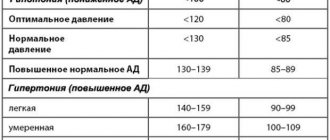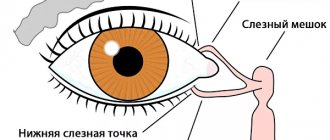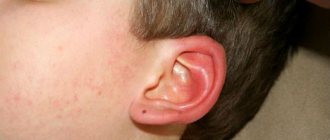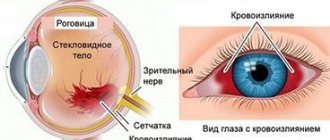Saliva performs important functions in the body. When food enters the oral cavity, the process of digesting food begins immediately with the help of enzymes found in saliva. In addition, it moistens the bolus of food so that it is convenient to swallow, thanks to it you can feel the taste of the food. It neutralizes alkalis and acids, protects against pathogenic microbes, and prevents drying out of the oral cavity.
Patients often come to see a doctor with a question about why there is blood in their saliva. Normally, this biological fluid cannot contain blood impurities. If it is, you should find out the reasons, since this may indicate a pathological process. Salivation with blood can be either a harmless phenomenon or a sign of a serious illness.
The reasons for the appearance of blood in saliva are varied, and only a doctor can make an accurate diagnosis after examination, history taking and examination. Before going to the hospital, you need to pay attention to some details:
- is there a cough;
- whether the temperature has increased;
- what color is saliva?
- is there any pain in the chest area;
- is there any damage in the oral cavity;
- Was the discharge one-time or repeated periodically?
Blood from neighboring tissues and organs
Blood in saliva can appear when it flows out of the nasopharynx, gums, tongue, or lips. Bleeding gums can occur with dental diseases such as gingivitis and periodontitis. Often with these pathologies you can find blood on your toothbrush in the morning. This can also happen if you brush your teeth too hard with a hard brush. In these cases, you need to contact a dentist, who will prescribe a course of treatment for periodontitis and explain how to properly brush your teeth and select a brush. Another reason is unsuccessful prosthetics, which results in damage to the gums.
Irritation of the mucous membranes is often observed in smokers who notice blood when they spit. Bloody saliva may be observed after a nosebleed.
Treatment
It is important to remember that hemoptysis is only a symptom. It is important to treat the underlying condition and make efforts to stop the bleeding. If these are inflammatory processes (pneumonia, bronchitis), a course of antibiotics and anti-inflammatory therapy in combination with drugs to regulate blood clotting are indicated. Regular cleansing of the bronchi from bloody sputum (sanitation) is also indicated.
If this is a tuberculosis lesion, anti-tuberculosis therapy is necessary, including surgical interventions on the affected lesions (cavities). For injuries and abscesses, the solution to problems is surgery; for cancerous lesions, tactics are selected individually, depending on the stage. Source: Ittrich H, Bockhorn M, Klose H, Simon M. The Diagnosis and Treatment of Hemoptysis // The Diagnosis and Treatment of Hemoptysis.Dtsch Arztebl Int. 2017 Jun 5;114(21):371-381. doi: 10.3238/arztebl.2017.0371..
Harmless reasons
Bloody discharge can be safe if damage to a small bronchial vessel occurs during stress during physical or mental stress, during treatment with coagulants.
People suffering from a severe cough, for example, with ARVI, often complain about the appearance of blood in their saliva. When coughing, not only the vessels of the bronchi, but also the throat can rupture. In this case, the person complains that his throat hurts, there is a burning sensation and discomfort. The discharge has a rusty-brown tint.
Salivation with blood is observed in many diseases, including many severe pathologies that require immediate treatment.
Blood in saliva may appear after brushing your teeth with a hard brush.
Prevention
The main methods of preventing hemoptysis are preventing the pathologies that cause it. Quitting smoking, maintaining a healthy lifestyle, regular exercise, and timely treatment of colds are important.
Sources:
- Earwood JS, Thompson TD. Hemoptysis: evaluation and management // Am Fam Physician. 2015 Feb 15;91(4):243-9.
- Ittrich H, Bockhorn M, Klose H, Simon M. The Diagnosis and Treatment of Hemoptysis // The Diagnosis and Treatment of Hemoptysis.Dtsch Arztebl Int. 2021 Jun 5;114(21):371-381. doi: 10.3238/arztebl.2017.0371.
- K. Krenev, I am Kabysh, O Yudin. Difficult patient or patient with hemoptysis // Sciences of Europe, 2021, No. 48, pp. 17-22
Pulmonary diseases
Most often, blood appears in saliva due to diseases of the respiratory system. Among them are the following pathologies:
- Tuberculosis. Blood can be released both without a cough and during it.
- Bronchitis. At first the cough is dry, then sputum with pus and scarlet streaks appears.
- Acute pneumonia. Most often, the discharge is rusty in color, less often scarlet.
- Lung cancer. A prolonged cough that produces red mucus.
- Benign formations, such as polyps.
- Lung abscess. In addition to bloody streaks, the sputum contains pus and a putrid odor.
- Pulmonary infarction.
- Parasitic lung infection.
- Fungal infection.
- Lung injury: bruise, gunshot wound, rupture, etc.
- Silicosis.
- Bullous emphysema.
- Cystic fibrosis.
- Pulmonary vascular hypoplasia.
- Foreign body in the lung.
Diagnosis of pharyngitis
Typically, the ENT examines the patient's throat, as well as his nose and ears, carefully palpates the lymph nodes, and listens to breathing using a stethoscope.
The streptococcal test is a simple and accurate way to diagnose bacterial pharyngitis. The doctor takes a scraping from the child's throat, and within 24-48 hours the result is ready. Streptococcal pharyngitis will have to be treated with antibiotics.
We have our own laboratory in the clinic, so you can always take all the necessary tests with us!
Other diseases
Hemoptysis is observed in some diffuse connective tissue diseases and other pathologies, including:
- Systemic lupus erythematosus.
- Goodpasture's syndrome.
- Sarcoidosis.
- Polyarteritis nodosa.
- Wegener's granulomatosis.
- Leukemia.
- Thrombocytopenia.
- Hemorrhagic diathesis.
- Hemophilia.
- Vitamin C deficiency.
- Stomach ulcer.
- Endometriosis. In this case, it is due to the growth of endometrial cells into the lung tissue.
Survey
As we have already said, the causes of hemoptysis can be various pathologies. In this regard, it is important to undergo diagnostic measures in a short time in order to identify the pathology that caused the symptom.
The initial diagnostic methods are analysis of the patient’s complaints, external examination, as well as auscultatory examination. Primary diagnostic measures are performed by a therapist or pulmonologist. Then other specialists can get involved, for example, a phthisiatrician, an oncologist.
To obtain objective data, you must use:
- Polyposition radiography. It identifies the cause of the symptom in more than 30% of cases.
- X-ray contrast techniques, for example, angiopulmonography, arteriography.
- Computed tomography. It is highly informative and accurate (reveals the cause of the symptom in more than 70% of cases).
- Fiberoptic bronchoscopy. A unique informative method allows you to simultaneously carry out diagnostic and therapeutic measures, for example, a biopsy or cauterization of a bleeding vessel.
- Blood analysis. A general analysis is important to determine the degree of blood loss and the level of anemia.
- Study of bronchial secretions. Examination of discharge during symptoms for the presence of cancer cells, the presence of tuberculosis, fungi, and parasites.
- Diagnostic operations. They are performed when the cause of hemoptysis is not found. The purpose of such operations is to identify the source that caused the symptom and its destruction.
- Heart study. In this case, echocardiography is used, which makes it possible to detect cardiac defects and secondary changes affecting the myocardium.
The Onco.Rehab integrative oncology clinic takes care of your health. Our doctors are ready to assist you and advise you on any questions you may have.
Current problem
For most people, heartburn is simply an occasional discomfort. Approximately 20% of the population of highly developed countries experience it at least once a month.
But for the 6% of people who have a chronic form of heartburn known as gastroesophageal reflux disease (GERD), unresolved (untreated) symptoms can lead to various health complications. People with erosions in the lining of the esophagus due to acid reflux often do not realize the harm of GERD until they have advanced stages of the disease.
If you experience frequent or prolonged heartburn (twice a week on a regular basis), consult your doctor. Here are nine reasons why you shouldn't ignore the symptoms of gastroesophageal reflux disease.
Breathing problems
If stomach acid accidentally flows into the windpipe after gastroesophageal reflux disease causes it to enter the esophagus, GERD can worsen asthma or pneumonia. Even without lung problems, GERD can cause shortness of breath and difficulty breathing. And treatment in this situation can be a double-edged sword. Because GERD medications, such as proton pump inhibitors, may actually increase the risk of pneumonia. (They can promote bacterial growth and suppress coughing, which is designed to help clear the lungs.)
Pay your doctor's attention to your lung function when treating reflux.
How to eliminate constant bleeding gums
To carry out successful treatment, it is important to find out why the gums are bleeding. You should not self-medicate, since the problem requires an integrated approach, which consists in eliminating the cause and restoring the health of the gums. Only a doctor can tell you how to treat a disease that causes bleeding. Different techniques may be needed.
Professional teeth cleaning
If dental plaque provokes complications in the form of bleeding, it is necessary to thoroughly clean your teeth. This does not mean ordinary hygiene procedures at home, but hardware cleaning in a dental office. The doctor uses ultrasound to crush the tartar, the particles of which are washed out with a mixture of water and air. You need to carry out a hygiene procedure twice a year. Unfortunately, not all patients comply with such recommendations.
Air Flow technology is used to remove soft deposits. In this case, finely dispersed soda is supplied along with water. After the procedure is completed, the teeth are polished, which further prevents the accumulation of plaque.
Such actions are sufficient for diagnosed gingivitis. The doctor will also tell you what to do to restore the mucous membrane. This may include rinsing or taking certain medications. Professional teeth cleaning is used if gingivitis has progressed to periodontitis. But this is only the beginning of treatment. Let's talk about ways to eliminate the disease further. If periodontal pockets have formed, you will need powerful ultrasound devices, such as Vector. In this case, the periodontist should deal with oral hygiene.
Rinse with solutions
Antiseptic treatment of the oral cavity can be carried out in the form of rinses based on the following agents:
- "Furacilina";
- "Rotokana";
- "Miramistina";
- "Chlorhexidine";
- alcohol solution "Chlorophyllipt".
Soda-saline solution also helps. You can add a few drops of iodine to it. It is better to use solutions through an irrigator - this increases their effectiveness. In case of bleeding, you need to use special toothpastes, including Parodontax, Lakalut, Colgate Total Pro. The compositions should not have a bleaching effect.
Drug therapy
To eliminate bleeding gums, the doctor may prescribe ointments and gels. They are applied to the problem area after rinsing the mouth. The following drugs are in demand in dental practice:
- "Metrogil Denta" - has antibacterial and anti-inflammatory properties, often prescribed for stomatitis, after tooth extraction;
- “Asepta” is a propolis-based gel that quickly relieves inflammation;
- "Kamistad" is a drug available in two forms (for children and adults);
- "Elugel" is a strong antiseptic that effectively fights pathogenic environments.
For inflammatory processes, the doctor may prescribe medicinal bandages, antibiotics (in some cases), and a course of vitamins.
Gum curettage
For periodontitis with the formation of deep periodontal pockets, the following surgical techniques are used:
- Closed curettage. To carry out the procedure, the doctor uses a special instrument – a curette. With its help, the doctor cleans the roots of the teeth. The tool penetrates to a depth of 3 mm.
- Open curettage. The technique is used when the deposits are deeper. It involves the following actions: peeling of the gums, cleaning and antibacterial treatment, suturing.
The disease can be cured using an integrated approach. Therefore, it is important to follow all doctor’s recommendations even after the procedure.
Esophageal stricture
If esophagitis continues for too long, the resulting scar tissue can narrow the esophagus. This stricture can lead to difficulty passing and swallowing food, which can become stuck at the level of scar tissue, causing pain.
Large pieces of food may become stuck and this situation may require endoscopic intervention to remove them. The stricture may cause frequent choking when eating. Because of this, patients often refuse to eat and lose a lot of weight.
Stricture is treated by widening or stretching the esophagus (bougienage or dilatation). These treatment procedures can have multiple effects on the stricture. But taking stomach acid blockers (proton pump inhibitors, PPIs, or H2 blockers) may prevent scarring in the esophagus from returning in the future.











